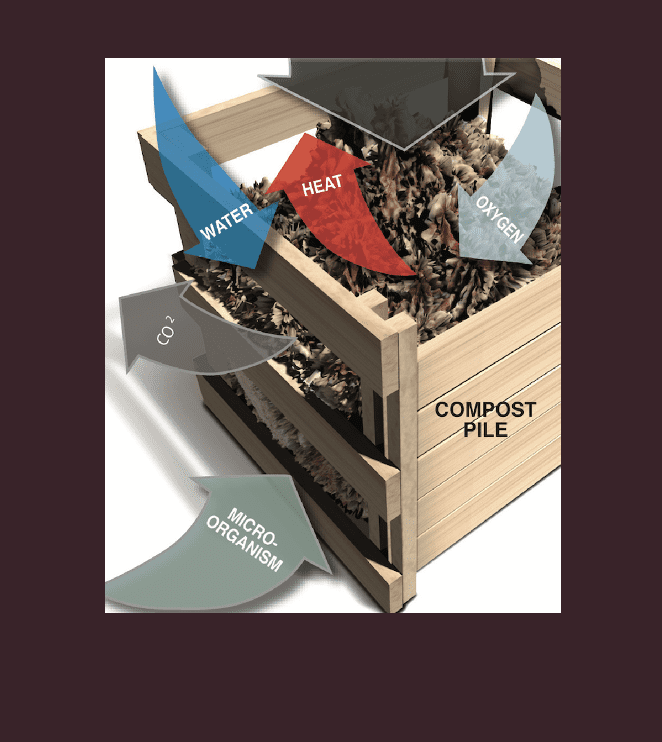Search Posts
Recent Posts
- Rhode Island Weather for May 31, 2025 – Jack Donnelly May 31, 2025
- Burn with Kearns: Fix Your Foundation: Core, Mobility & Joint Health – Kevin Kearns May 31, 2025
- In the News… quick recap of the week’s news (5.31.25) May 31, 2025
- Business Beat: Navigant CU receives prestigious Community Impact Award from NEACH May 31, 2025
- To Do in RI: Taste of Rhode Island. Food, libations, entertainment, auction for Matunuck Oyster Bar May 31, 2025
Categories
Subscribe!
Thanks for subscribing! Please check your email for further instructions.

A Greener View: DIY compost saves money – Jeff Rugg
By Jeff Rugg, contributing writer
Instead of spending money to have your yard waste picked up and hauled off to a composting facility and then turning around and buying organic matter for the garden and flower beds, why not just do it yourself? Compost has many sources and many uses. It is mostly decayed organic matter. The most common ingredients are leaves, grass clippings, dead plants and kitchen scraps from fruits and vegetables. Do not use animal products from the kitchen because they decompose slowly and attract pests.
By returning composted organic matter to the garden, you can improve plant growth. It adds nutrients, loosens clay soil for roots, water and air and improves the soil’s structure. Just as grass benefits from having the nutrients in its clippings recycled back into the lawn, trees also benefit from having their nutrients returned to them. If there are just a few leaves, mow them a few times to break them into small pieces that will filter down to the soil. Larger quantities of leaves can be composted and added back to the tree as mulch.
Keeping your compost pile in a bin will keep the area tidy. A bin can be purchased or made from snow fencing, wire fencing or concrete blocks. The most important feature of any bin is that air must be able to circulate on all sides. The ability to cover it to keep rain out is also helpful.
Making compost is not very difficult if you follow a few basic principles. First, bacteria and fungi do the work, so they must be added and given the proper conditions to grow. They are added through the incorporation of soil into the pile or by store-bought inoculants.
Any plant material is food for these microorganisms. They use carbon in the food for energy and nitrogen for making protein. They grow fastest and break down organic matter quicker when the carbon to nitrogen ratio is about 30:1. Leaves are naturally about 60:1 and grass clippings are about 19:1. Two bags of grass clippings to one bag of leaves will provide a good nutrient balance for the microbes. If you have been leaving the clippings on the lawn all year (that’s great), it is OK to use some for the compost.
The best place for the pile is in a shady, well drained, out-of-view (to you and the neighbors) location. The pile must be kept damp like a wrung-out sponge. If the pile dries out the decomposition slows down, and if it is too soggy fermentation may start.
A compost pile of about five feet by five feet works best. It is large enough to retain the heat generated by decomposition and small enough to allow interior air circulation essential to prevent fermentation and sour odors.
The interior of the pile will reach a temperature of 130 to 170 degrees in about one week. The heat will kill many insect eggs, weed seeds and disease organisms. In two to three weeks the temperature will drop, and the pile will need to be mixed by turning it inside-out. Turning the pile after each peak in temperature will speed up the process.
The compost will be ready in two to six months, depending on the temperature and type of organic matter used. Virtually no decay takes place when the temperature is below the 40s. It is ready to use when it is dark brown, uniformly crumbly and has a sweet, earthy smell.
A properly maintained compost pile doesn’t smell bad. If it starts to smell rotten, it is either too wet or not getting enough air circulation. Turning it, mixing in more coarse material such as wood chips and covering it to keep out rain will help. If it is too dry, try cupping the top so it will gather rainwater. If it is only moist and warm in the middle, it is probably too small. If the pile won’t heat up, add nitrogen from organic fertilizer like bloodmeal, manure or grass clippings.
Composting is an easy and cost-effective method of returning precious organic matter back to your plants and fixing clay soil problems.
___
To read more columns on gardening by Jeff, go to: https://rinewstoday.com/?s=jeff+rugg

To find out more about Jeff Rugg and read features by other Creators Syndicate writers and cartoonists, visit the Creators Syndicate website at www.creators.com.
Email questions to Jeff Rugg at info@greenerview.com.
COPYRIGHT 2023 JEFF RUGG – DISTRIBUTED BY CREATORS
